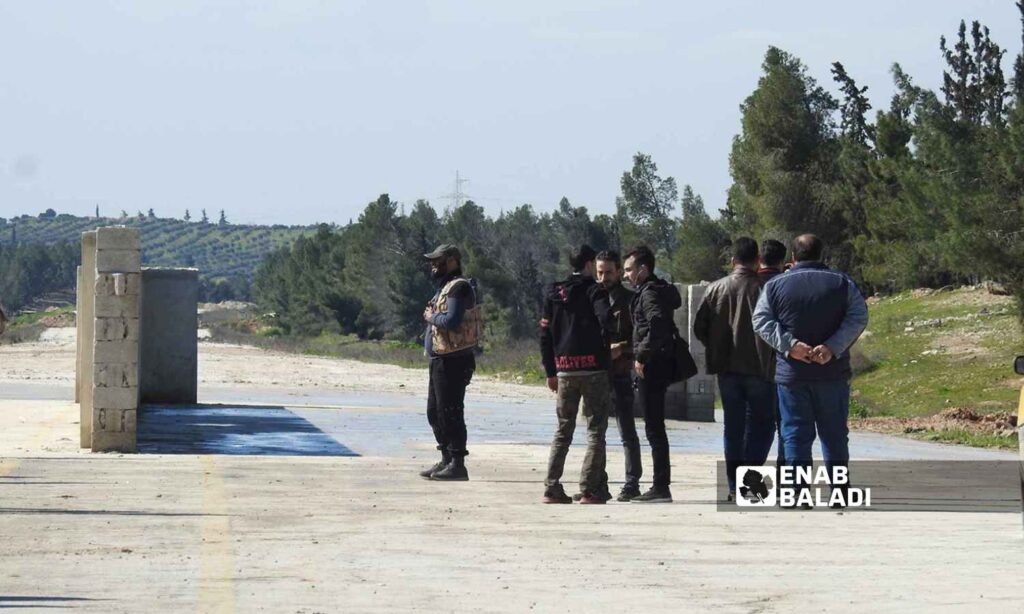A statement from the local council of the city of al-Bab, eastern Aleppo governorate, declared the opening of the Abu al-Zandeen crossing connecting the area controlled by the Syrian National Army (SNA) with the regions under Syrian regime control.
The council announced via Facebook on Wednesday, June 26, that the crossing would be opened “experimentally” within the next 48 hours, with the aim of establishing it as an “official commercial crossing.”
The council added that it would release guidelines and instructions related to declaring Abu al-Zandeen an official trade crossing at a later date.
The council emphasized that opening the crossing reflects its commitment to “improving the living conditions for the locals and enhancing local economic activities.”
It considered that the opening of the border would allow traders and business owners in the area to transport goods, which would boost commercial activities and increase local council resources for public welfare and infrastructural redevelopment in al-Bab.
In its post, the council requested the residents and local activities in al-Bab to cooperate with the concerned authorities to facilitate the crossing’s opening and invigorate commercial activities in the city, deeming the step beneficial for everyone.
Up until the moment this news was reported, the Syrian regime had not commented on the issue of reopening the crossing.
Since mid-June, accounts and Syrian news sites have circulated news about meetings between representatives of Turkey and Russia at the Abu Al-Zandeen crossing site in eastern Aleppo governorate, sparking anti-movement protests in the region.
On June 11, civilians and military personnel in al-Bab protested following news about Russia’s intent to conduct a joint patrol with Turkish forces in the region, with local residents taking to the streets to express their opposition to the entry of Russian forces.
The matter of reopening the crossing was also covered by the Syrian Observatory for Human Rights (based in London) on June 13, quoting unnamed sources who said that Russian and Turkish forces were preparing to reopen the Abu al-Zandeen crossing.
The local SANA agency, also on June 13, quoted an “informed source” (unnamed) stating that meetings between Turkish and Russian representatives were held at the crossing site to reactivate it.
The report added that discussions about reopening the Abu al-Zandeen crossing as a humanitarian gate had been ongoing for a while, but this had not materialized until the time the news was published.
Abu al-Zandeen connects the city of al-Bab in eastern Aleppo within the Euphrates Shield operation zone, controlled by the opposition under Turkish sponsorship, to eastern Aleppo under regime control. It is situated west of al-Bab, near the village of al-Shamawiya, which is under regime control.
The same crossing had previously witnessed several prisoner exchange operations between the National Army and Syrian regime forces, under Turkish and Russian supervision and with the oversight of the United Nations and the International Red Cross.
The crossing had also been a witness to forced displacement operations from southern to northern Syrian provinces, as convoys of displaced people from Damascus and Quneitra had passed through it at various times.
Closed in 2020
On March 18, 2020, the Syrian Interim Government (SIG) completely closed the internal crossings of al-Hamran, Aoun al-Dadat, and Abu al-Zandeen.
The Interim Government decided to close these crossings to commercial traffic in both directions, after stopping civilian movement, citing safety concerns and measures to prevent the spread of COVID-19.
Since then, the crossing had only reopened on exceptional occasions for prisoner exchange operations at distant intervals.
Despite frontlines cutting through Syrian geography, the four control zones maintained internal crossings among them, used for commercial purposes and prisoner exchange operations over past years.

